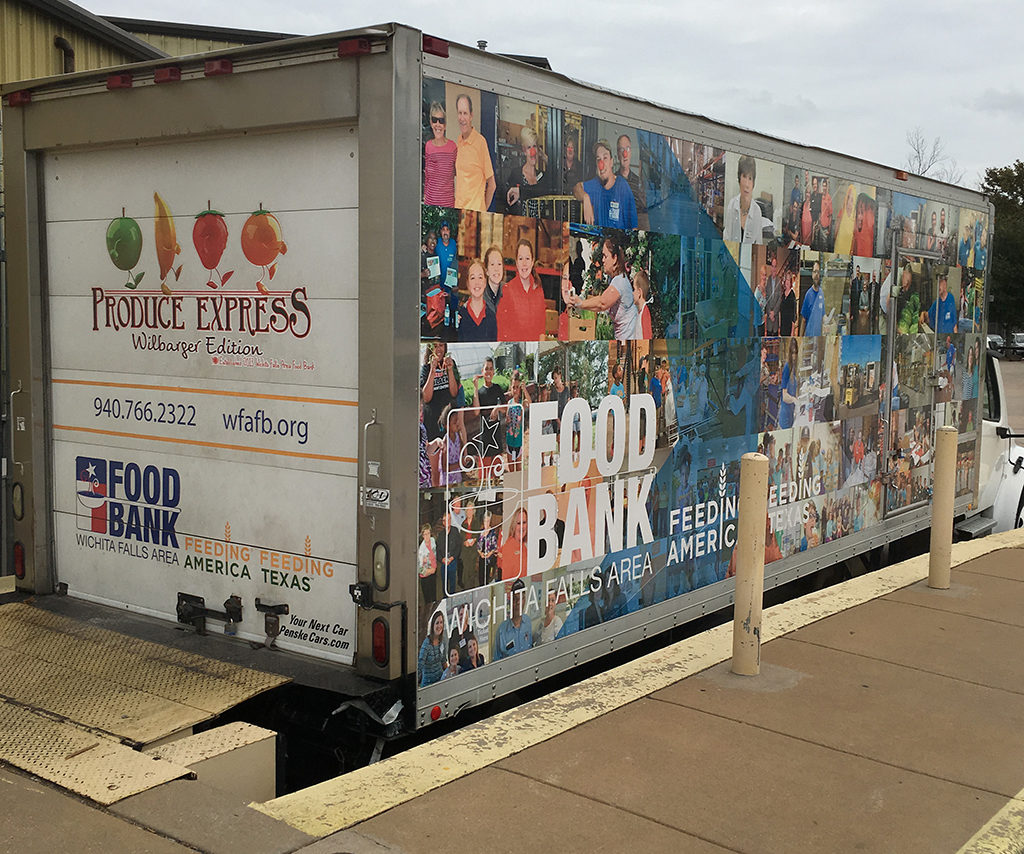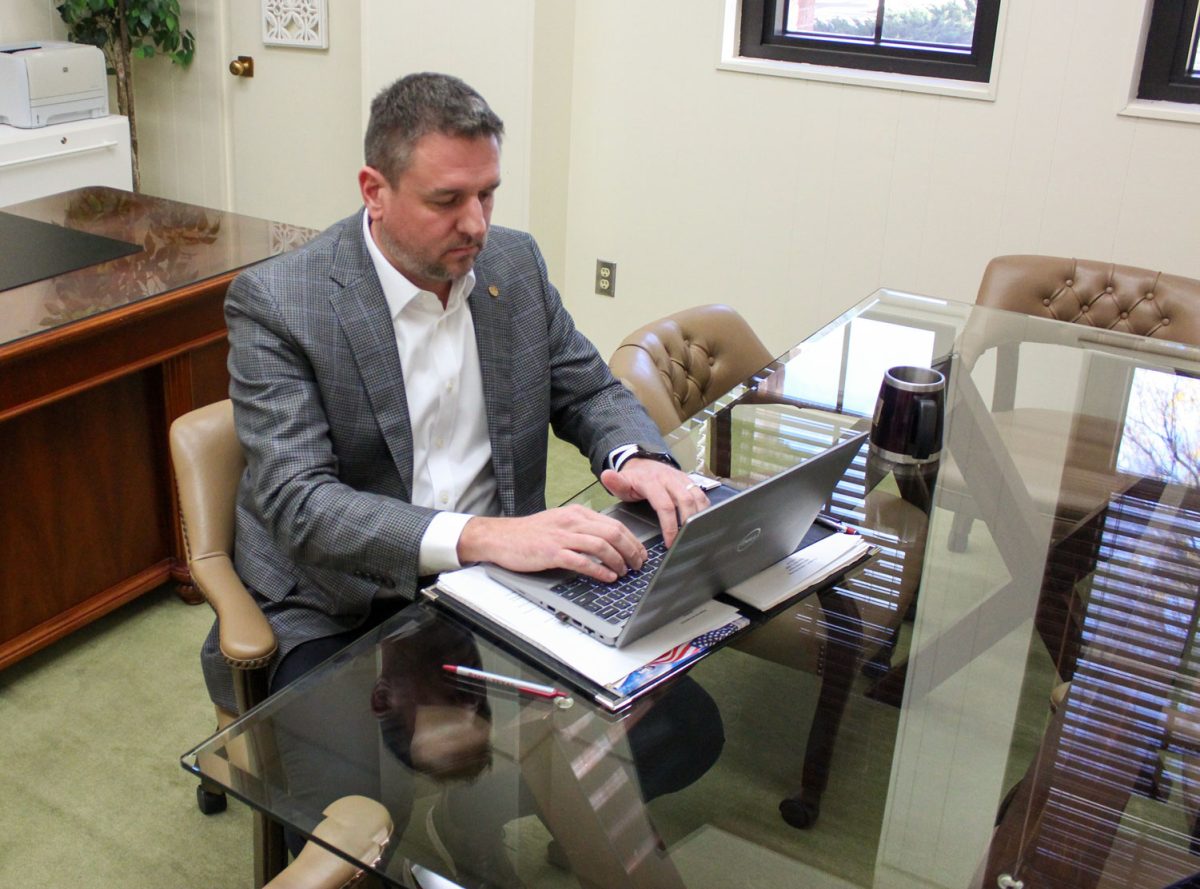
In the Wichita Falls region, 22,560 people are food insecure, meaning they do not know where their next meal will come from. Of the 22,560 individuals, 26 percent (more than 1,560) of them are students. Over the last three years, the Wichita Falls Area Food Bank has decreased the hunger gap in the region from 9.8 million meals needed annually to 6.9 million meals.
“It’s our neighbor, co-worker, senior citizens, children that go to school with our children, and veterans that are food insecure. Needs continue to grow with population and there is no help to small,” Emily Kincaid, marketing and development director for the Wichita Falls Area Food Bank, said.
The Wichita Falls Area Food Bank is providing emergency food boxes for Dominican students whose families have been affected by Hurricane Maria. These students affected are able to pick up meal boxes on site daily.
“These emergency boxes are for Dominica students who have been cut off from their lifelines and financial lines back home, and for those who are not working on campus or able to work,” Kincaid said.
The WFAFB is a non-profit food distributing organization founded in 1982 that provides services to the food insecure individuals and families in the 12 North Texas counties that make up the Wichita Falls region.
The food received by the WFAFB is distributed to local food pantries, homeless shelters, Texas Workforce Commission, Helen Farabee and one of the 200 local agencies or non-profit organizations.
The WFAFB receives its donations from large local corporations, the GoodBuy program and monetary donations from the community.
“We receive access stock from large local corporations like Market Street or Walmart. They donate the extra produce that they don’t use but it is ‘of course’ always fresh food. Another way we are able to receive food is through a program called GoodBuy, this program allows us to buy fresh produce and nonperishable items very cheaply,” Kincaid said.
Lack of transportation, low-income, elderly age, and food deserts (areas where quality food is not available) all play a role in the suffering of food insecurity and hunger in the Wichita Falls region.
“The east side of town is considered a food desert. There is nothing but a gas station nearby. I believe a food pantry is going to be opening within that area fairly soon,” Kincaid said.
With a mission to “unite our communities to fight hunger with food, education, and advocacy,” the WFAFB provides four programs that serve those in need of a fresh meal, nutritional education or transportation.
Produce Express is a program that focuses on increasing fresh fruits and vegetable distribution. The WFAFB annual report says, “increasing our fresh fruits and vegetable distribution from 15 percent two years ago to 30 percent in 2016 has been an enormous task.”
One in six people in the U.S. are food insecure and 25 percent of them who suffer are children. Wichita Falls Area Food Bank offers a program called “Power Pak 4 Kids.” It is a program focused on stopping weekend hunger in children ages 3-15 years old. Every Friday participating children are sent home with a bag of food in their backpacks.
“An 8-year-old kid once said to their teacher, ‘who is the snack fairy?’ That has become one of my favorite quotes,” Kincaid said.
Kincaid also spoke about a child who participated in the Power Pak program and over the course of one year went from underweight to a healthy weight.
“It is a great thing to see how we can really help a child who may not be able to help themselves,” Kincaid said.
Nutrition Education is a program focused on educating individuals on nutritional food and how to prepare it. The WFAFB annual report said in 2015 only 2,316 people were educated on nutrition. Today that number has increased to 3,851. The nutrition education program offers 295 nutrition education classes for adults and children.
“No one knew what lentils were two years ago, but after our workshop where we taught a class on how to prepare lentils, they have been flying off the shelf. Everyone wants lentils,” Kincaid said.
Kids Café is a program that provides hot meals to local children ages 3-18 in a safe environment, free of charge.
“No child is ever turned away for a meal,” Kincaid said.
Working with the Texas Workforce Commission, the Municipal Court and more than 200 local organizations, the WFAFB relies on the community to help accomplish their mission.
CEO of WFAFB, Kara Nickens said, “We have had nursing students, fraternities, and sororities all help with our volunteer work.”
The WFAFB annual report says that more than 19,626 hours were logged in 2016 from more than 3,000 volunteers. The value in these 3,000 plus volunteers is valued at more than $473,000. Kincaid encourages students to participate via food drives, word of mouth, monetary donations and volunteer opportunities.
Breann Jackson, nursing alum, said, “When we volunteered at the food bank, it was overwhelming to see the amount of food the warehouse stores and how much help they could use sorting and organizing the food.”
The amount of food received and distributed is gauged by pounds. According to Kincaid, the year-to-date analysis says the WFAFB is down in pounds of food.
Kincaid said, “The reason for this may be due to natural disasters like Hurricane Harvey. It also has to do with larger agencies tightening up their stock. I have noticed that society feels for the extremely poor, as they should but it’s easy to forget about the working poor.”












